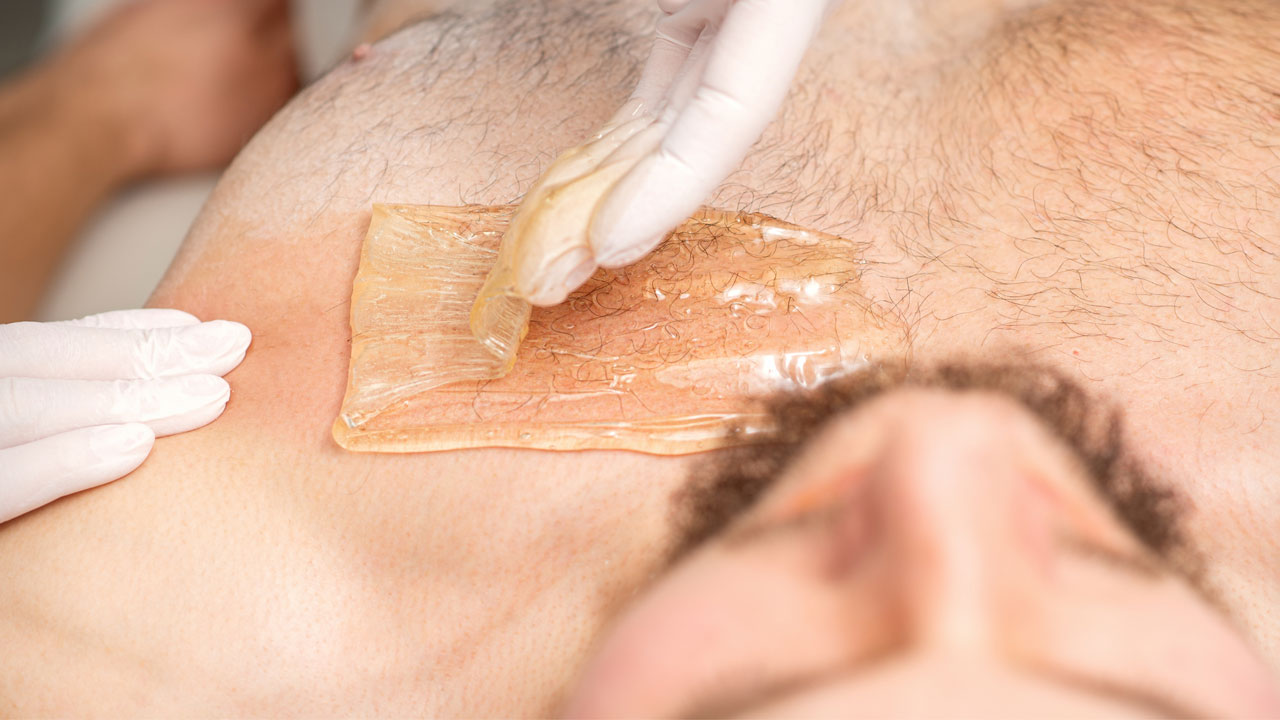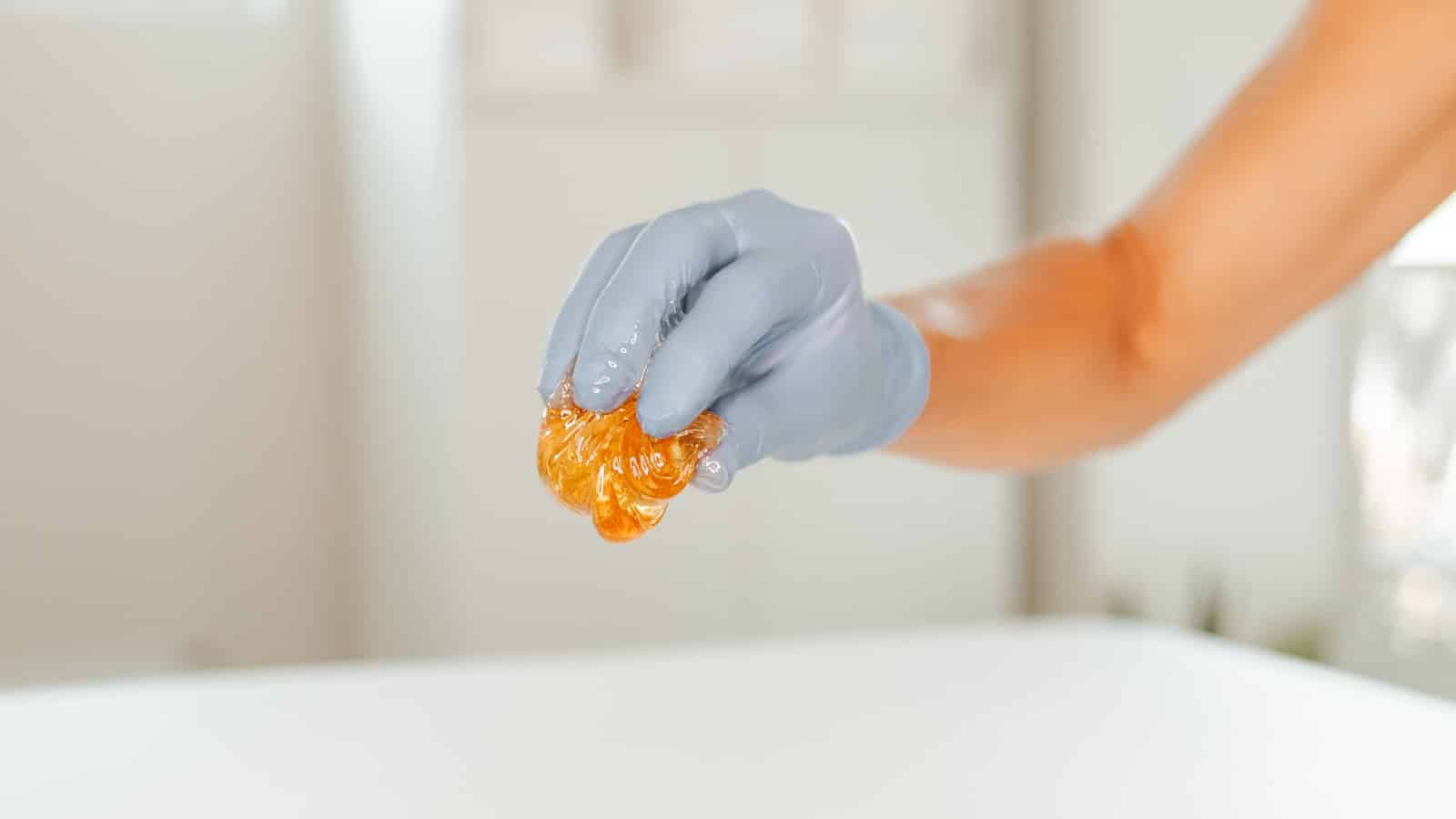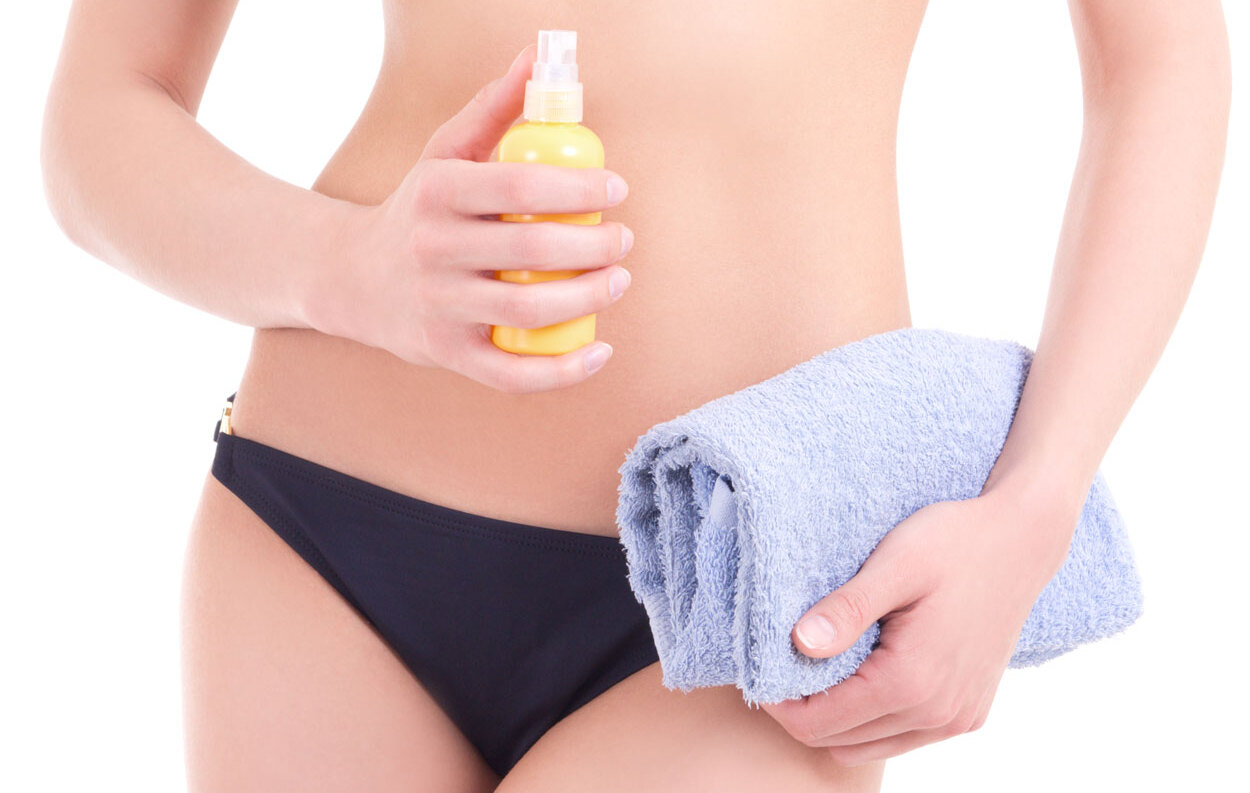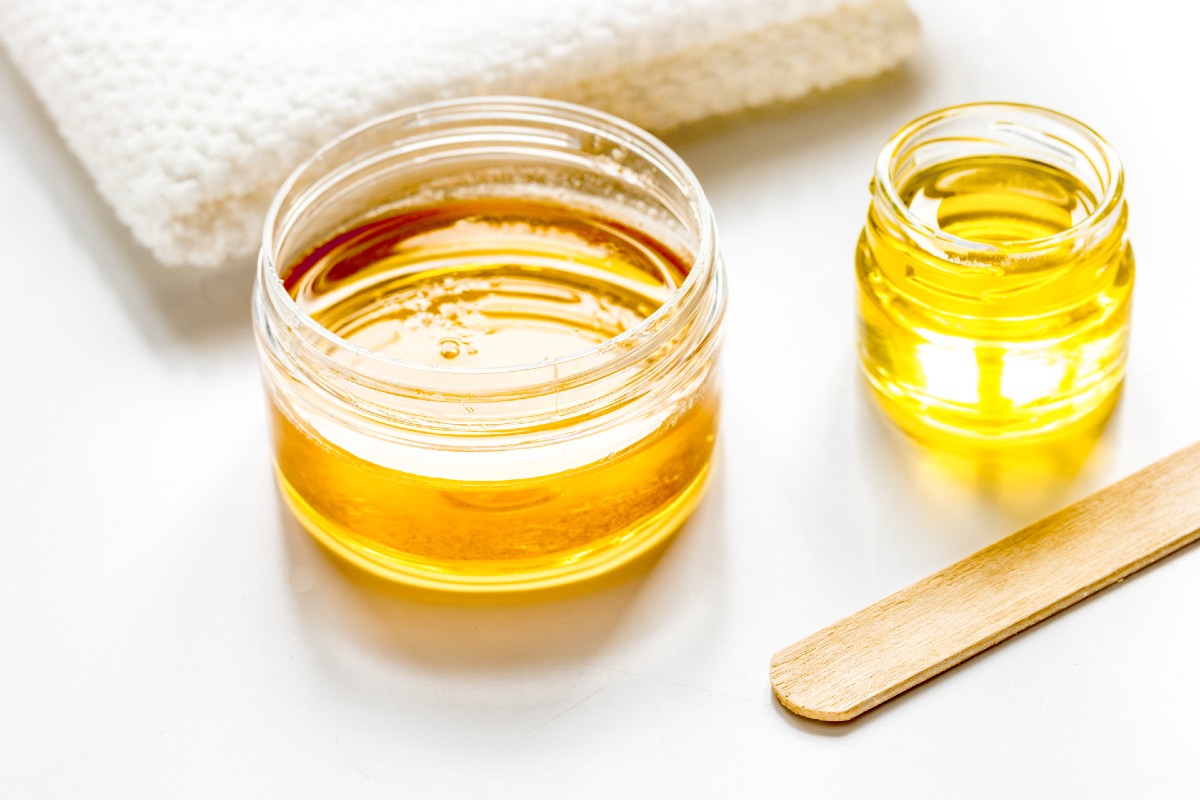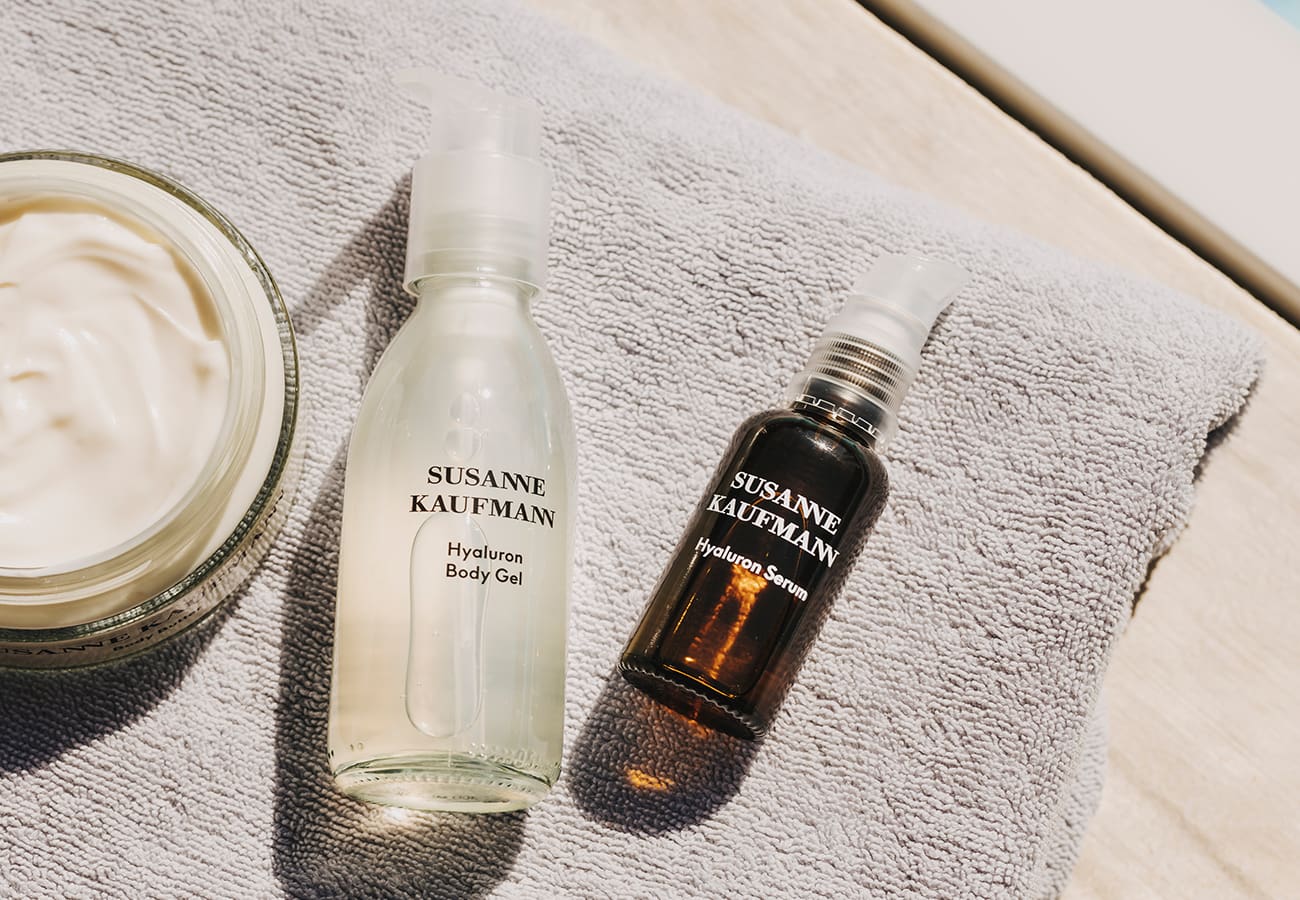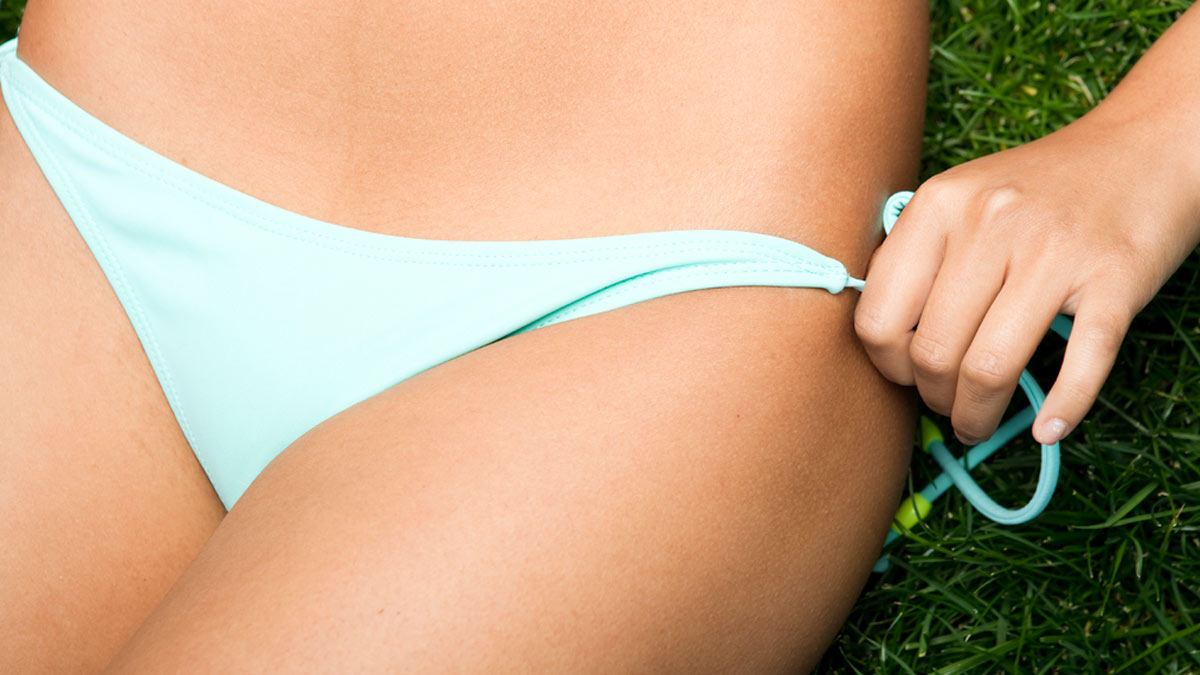Home>Latest Posts>How Do They Do A Brazilian Wax
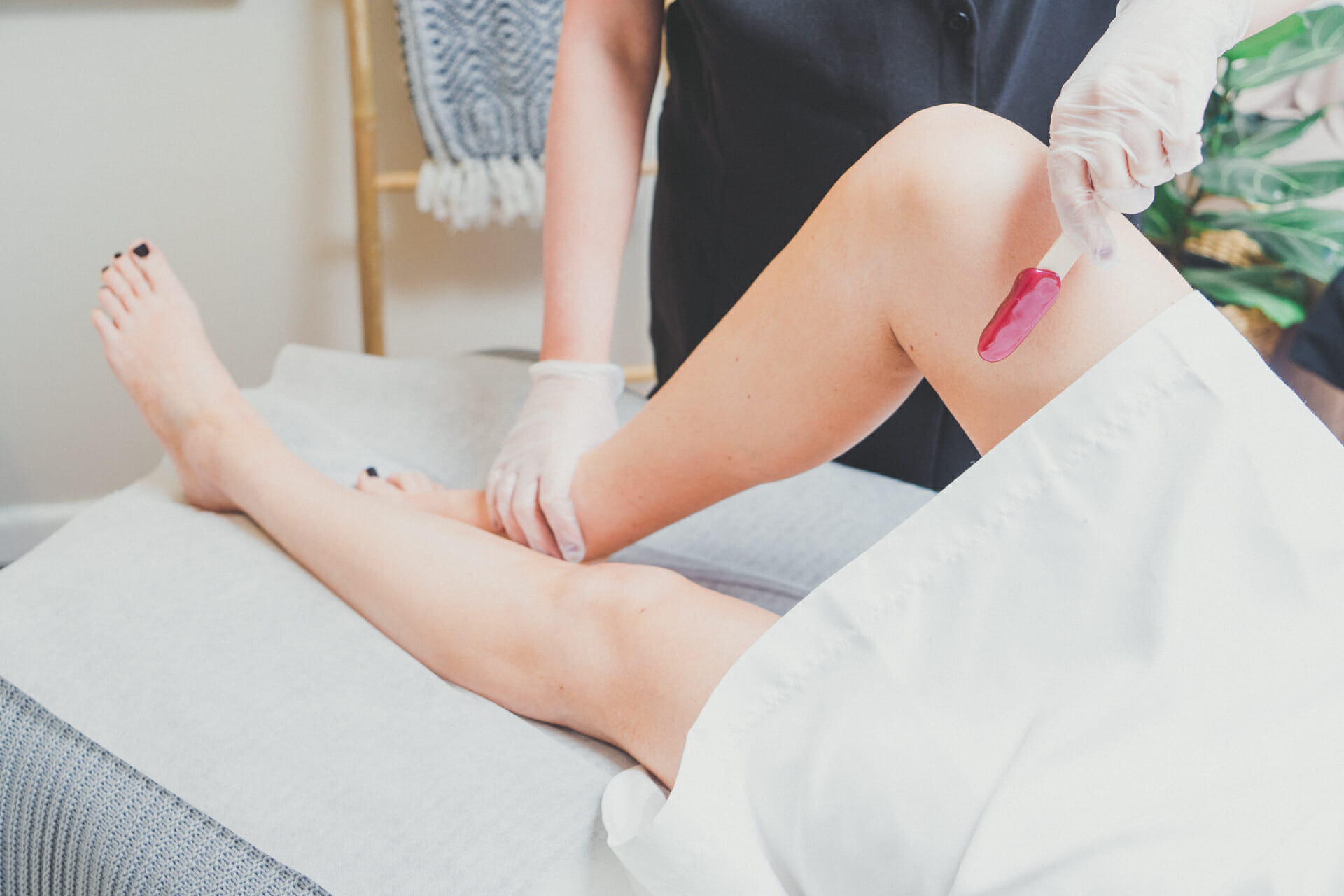

Latest Posts
How Do They Do A Brazilian Wax
Modified: September 23, 2023
Learn how women get a Brazilian wax and what to expect. Discover tips and techniques for a comfortable and effective hair removal experience.
(Many of the links in this article redirect to a specific reviewed product. Your purchase of these products through affiliate links helps to generate commission for Under-tec.com, at no extra cost. Learn more)
Table of Contents
Introduction
Welcome to our comprehensive guide on one of the most popular beauty treatments for women – the Brazilian wax. In today’s culture, grooming practices have evolved, and many women are opting for a hair-free look in their intimate areas. Brazilian waxing, named after the famous bikini styles from Brazil, has gained immense popularity due to its long-lasting results and smooth finish.
But what exactly is a Brazilian wax? How does it work, and what should you expect? In this article, we will delve into the world of Brazilian waxing, providing you with all the information you need to know before booking your first appointment.
A Brazilian wax involves the removal of hair from the pubic area, including the front, back, and everything in between. Unlike a regular bikini wax, which focuses on removing hair from the sides and top of the bikini line, a Brazilian wax leaves you completely bare. It’s a preferred choice for those who want a clean and hairless look, especially during the summer months or for special occasions.
Before we get into the details of the process, it’s important to emphasize the significance of proper preparation. To ensure a successful Brazilian wax experience, it’s crucial to follow the necessary steps before your appointment. This includes allowing your hair to grow to a certain length, exfoliating the skin, and avoiding any products that could irritate or sensitize the area.
Once you have prepared for your Brazilian wax, you will arrive at the salon or spa to begin the process. A trained esthetician will lead you through the steps, which typically involve applying warm wax to the area and swiftly removing it with a cloth strip. While the procedure may be uncomfortable or slightly painful for some, the results are well worth the temporary discomfort.
In the following sections, we will provide you with a detailed overview of the entire Brazilian waxing process, including pain management techniques and aftercare tips to ensure your skin stays healthy and smooth. We will also discuss the benefits of Brazilian waxing, as well as potential risks and side effects you should be aware of. By the end of this article, you will have the knowledge and confidence to undergo a Brazilian wax and enjoy its long-lasting effects.
What is a Brazilian Wax?
A Brazilian wax is a method of hair removal that involves the complete removal of hair from the pubic area, front to back. It gets its name from the popularity of the bikini styles in Brazil, where women often opt for a hairless look in their intimate areas. Unlike a traditional bikini wax, which focuses on removing hair from the sides and top of the bikini line, a Brazilian wax removes all hair, leaving you completely bare.
The process of a Brazilian wax is typically performed by a trained esthetician in a salon or spa setting. The esthetician will apply warm wax to the desired areas using a wooden stick or spatula. The wax is then covered with a cloth strip, which is pressed firmly onto the skin to adhere to the hair. After a few moments, the esthetician will swiftly remove the cloth strip, along with the hair, in the opposite direction of the hair growth.
While the procedure may sound daunting, many women find that the initial discomfort is well worth the results. A Brazilian wax provides a smooth and hairless finish that can last for several weeks, depending on individual hair growth rates. It is a preferred option for women who want to maintain a clean and hair-free look, whether for personal preference, aesthetics, or cultural reasons.
It’s important to note that a Brazilian wax requires an intimate level of exposure, as the esthetician will need access to all areas for thorough hair removal. As a result, it’s essential to choose a reputable salon or spa with experienced professionals who prioritize cleanliness, privacy, and client comfort.
It’s also worth mentioning that there are different variations of the Brazilian wax, depending on personal preferences. Some clients may choose to leave a small strip of hair, often referred to as a “landing strip,” while others prefer a “full Brazilian” that removes all hair from front to back. The choice is entirely up to you and what you feel most comfortable with.
In the next section, we will explore the necessary preparation steps to ensure a successful Brazilian wax experience. These steps are crucial for optimal results and can help minimize any potential discomfort during the procedure. By following the appropriate preparation guidelines, you can ensure a smooth and satisfying Brazilian waxing session.
Preparing for a Brazilian Wax
Proper preparation is key to ensuring a successful and comfortable Brazilian wax experience. By following these steps, you can minimize potential discomfort and achieve optimal results.
Firstly, it’s important to allow your hair to grow to a certain length before your appointment. Ideally, the hair should be at least ¼ inch long to ensure that the wax can effectively grip the hair follicles for removal. If your hair is too short, it may be challenging for the wax to remove the hair completely, resulting in an incomplete waxing session.
Additionally, it’s recommended to exfoliate the area a day or two before your appointment. Exfoliation helps remove dead skin cells and allows the wax to adhere better to the hair, resulting in a cleaner and more thorough wax. Avoid exfoliating on the day of your appointment, as it can make the skin more sensitive and prone to irritation.
On the day of your Brazilian wax, it’s best to arrive clean and fresh. Take a shower or bath before your appointment to ensure that the area is clean and free of any dirt, oils, or lotions. Avoid applying any moisturizers or creams to the area, as they can interfere with the wax’s ability to adhere to the hair.
It’s also a good idea to wear loose-fitting and comfortable clothing to your appointment. Tight-fitting clothes can cause friction and discomfort after the waxing session, so opt for breathable fabrics that won’t rub against the freshly waxed skin.
If you’re concerned about pain during the waxing process, you can take an over-the-counter pain reliever about 30 minutes before your appointment. This can help alleviate any discomfort and make the experience more tolerable.
Lastly, it’s important to communicate with your esthetician about any specific concerns or sensitivities you may have. They can provide guidance and ensure that the waxing process is tailored to your needs. Remember, open communication and trust are essential for a positive experience.
By following these preparation tips, you can enhance the effectiveness of your Brazilian wax and minimize any potential discomfort. Now that you’re ready for your appointment, let’s move on to the next section to explore the actual process of a Brazilian wax.
The Waxing Process
Now that you’re prepared and ready for your Brazilian wax, let’s dive into the actual waxing process. While the experience may vary slightly depending on the salon or spa you visit, the general steps remain the same.
1. Consultation: Your esthetician will start by discussing your desired outcome and any specific requests or concerns you may have. This is an opportunity to communicate openly and ensure that you’re both on the same page regarding the waxing process.
2. Preparing the area: Your esthetician will provide you with privacy while you undress and prepare yourself for the waxing. They may provide disposable underwear or allow you to bring your own if you prefer. They will also cleanse the area to remove any oils, lotions, or sweat.
3. Applying the wax: The esthetician will warm the wax to a comfortable temperature and apply it in small sections using a wooden stick or spatula. They will apply the wax in the direction of hair growth, ensuring that all desired areas are covered.
4. Placing the cloth strip: After applying the wax, the esthetician will place a cloth strip over the waxed area and press it firmly onto the skin. This helps the wax adhere to the hair and prepares for the hair removal process.
5. Removing the wax: Once the wax has cooled and adhered to the hair and cloth strip, the esthetician will swiftly remove it in the opposite direction of hair growth. This removal motion helps to pull out the hair from the root, resulting in longer-lasting results.
6. Repeat the process: The esthetician will continue applying and removing the wax in small sections until all desired areas have been treated. They may reapply wax if necessary to ensure all hair is effectively removed.
7. Tweezing and detail work: After completing the main waxing process, the esthetician may use tweezers to remove any stray hairs or perform any necessary touch-ups. This ensures a clean and smooth finish.
8. Post-waxing care: After the waxing is complete, the esthetician will provide you with aftercare instructions to follow. This may include avoiding excessive heat, tight clothing, and certain activities for a specified period to allow the skin to heal properly.
Remember, the waxing process may cause some discomfort, especially during the initial hair removal. However, it typically becomes more bearable with subsequent appointments as the hair becomes finer and easier to remove.
In the next section, we’ll discuss pain management techniques that can help make your Brazilian waxing experience more comfortable.
Pain Management during a Brazilian Wax
It’s no secret that undergoing a Brazilian wax can be uncomfortable or even painful for some individuals. However, there are several techniques and tips you can employ to minimize the discomfort and make the experience more manageable.
1. Choose the right timing: The sensitivity of your skin can vary depending on your menstrual cycle. If you’re particularly sensitive or prone to discomfort during your period, it may be best to avoid scheduling your Brazilian wax appointment during that time.
2. Take an over-the-counter pain reliever: If you’re concerned about pain, consider taking a mild pain reliever like ibuprofen or acetaminophen about 30 minutes before your appointment. This can help reduce any discomfort during the waxing process.
3. Relax and breathe: It’s natural to feel tense or anxious during a Brazilian wax, but it’s important to stay as relaxed as possible. Take deep breaths and try to focus on a calming image or thought. Relaxing the muscles in the area being waxed can help ease the pain.
4. Communicate with your esthetician: Don’t hesitate to communicate your pain threshold and concerns with your esthetician. They can adjust their technique to minimize discomfort and provide breaks if needed. A good esthetician will prioritize your comfort and well-being throughout the process.
5. Consider numbing creams: Some individuals find relief by using over-the-counter numbing creams or sprays that contain lidocaine or benzocaine. These products can temporarily numb the skin, reducing pain during the waxing process. However, it’s important to follow the instructions and use them sparingly to avoid any adverse reactions.
6. Distract yourself: Bring along a favorite book, podcast, or music playlist to help take your mind off the waxing process. Engaging in something enjoyable and distracting can help redirect your focus away from any temporary discomfort.
7. Take breaks if necessary: If the pain becomes too intense during the waxing session, don’t hesitate to ask for breaks. Pausing and allowing yourself a moment to breathe and relax can help reset your tolerance and make the process more bearable.
Remember that everyone’s pain threshold is different, and what works for one person may not work for another. It’s essential to listen to your body and communicate your needs to your esthetician throughout the process.
In the next section, we’ll provide you with aftercare tips to ensure that your skin stays healthy and smooth post-Brazilian wax.
Aftercare Tips
After undergoing a Brazilian wax, proper aftercare is crucial to maintain the health and appearance of your skin. By following these post-waxing tips, you can ensure that your skin stays smooth, free from irritation, and recovers effectively.
1. Avoid touching or scratching: Resist the temptation to touch or scratch the waxed area, as this can introduce bacteria and potentially cause infection. It’s essential to keep the area clean and allow it to heal naturally.
2. Stay away from heat and excessive sweating: Avoid hot baths, saunas, steam rooms, or any activities that may cause excessive sweating for at least 24 hours after your wax. Heat and sweat can irritate the freshly waxed skin and lead to inflammation or infection.
3. Wear loose-fitting clothing: Opt for loose-fitting, breathable clothing to avoid friction and irritation on the waxed area. Tight clothing can rub against the sensitive skin, causing discomfort or ingrown hairs.
4. Avoid exfoliation: Refrain from using harsh exfoliators or scrubs on the waxed area for at least 48 hours. Exfoliation can further irritate the skin and disrupt the healing process. After 48 hours, you can gently exfoliate the area to prevent ingrown hairs.
5. Moisturize regularly: Keep the waxed area moisturized to promote healing and prevent dryness. Use a gentle, non-fragrant moisturizer to avoid further irritation or clogging of the hair follicles.
6. Avoid sun exposure: Stay out of direct sunlight or tanning beds for at least 24 to 48 hours after your Brazilian wax. The freshly waxed skin is more susceptible to sunburn and damage, so it’s essential to protect it with clothing or sunscreen.
7. Say no to sexual activity: Refrain from engaging in sexual activity for 24 to 48 hours after your wax. The waxed area is delicate and can be more prone to irritation or infection during this time.
8. Regularly exfoliate to prevent ingrown hairs: After 48 hours, gently exfoliate the waxed area using a soft brush or exfoliating mitt. This helps prevent the buildup of dead skin cells and reduces the chances of ingrown hairs.
It’s important to remember that everyone’s skin may react differently to a Brazilian wax. If you experience any excessive redness, swelling, or discomfort that lasts longer than a few days, it’s best to consult with a dermatologist or your esthetician for further guidance.
By following these aftercare tips, you can help your skin recover and maintain its smoothness and health after a Brazilian wax. Now, let’s move on to the next section, where we’ll explore the various benefits of opting for a Brazilian wax.
Benefits of a Brazilian Wax
Opting for a Brazilian wax offers several benefits beyond the immediate hair removal. Here are some of the advantages that make it a popular choice among women:
1. Longer-lasting results: Unlike shaving, which only provides temporary hair removal, a Brazilian wax offers long-lasting results. By removing the hair from the root, it takes longer for the hair to grow back, allowing you to enjoy a hair-free period that can last up to several weeks.
2. Smoother skin: Brazilian waxing not only removes the hair but also exfoliates the skin, leaving it feeling smooth and rejuvenated. The waxing process removes dead skin cells along with the hair, revealing a fresher and smoother complexion.
3. Minimized hair growth over time: Regular Brazilian waxing can result in diminished hair growth over time. With consistent waxing, the hair follicles can weaken, leading to finer and sparser regrowth. This makes future waxing sessions more comfortable and reduces the need for frequent maintenance.
4. Clean and hygienic feel: Many women choose a Brazilian wax for the clean and hygienic sensation it offers. Without hair in their intimate areas, they may feel fresher and more comfortable, particularly during hot weather or activities that may cause sweating.
5. Boost in self-confidence: Having smooth and hair-free skin in the intimate area can boost self-confidence and make you feel more comfortable and empowered. It allows you to wear any swimsuit or underwear style with confidence, knowing that you have a clean and well-groomed appearance.
6. Freedom from daily maintenance: With a Brazilian wax, you can say goodbye to the daily task of shaving or using hair removal creams. This saves time and effort, and eliminates the risk of cuts, nicks, or skin irritation that can occur with other hair removal methods.
7. Versatile bikini line: A Brazilian wax gives you versatility when it comes to bikini styles. Whether you prefer a high-cut bikini, thong, or even going completely bare, a Brazilian wax provides a clean canvas for any bikini style you choose to rock.
It’s important to remember that the benefits of a Brazilian wax may vary from person to person. Some individuals may experience more significant hair growth reduction or smoother skin, while others may have different results based on their hair type and individual factors.
Now that we’ve explored the benefits of a Brazilian wax, let’s move on to the next section, where we’ll discuss potential risks and side effects that you should be aware of before getting a Brazilian wax.
Risks and Side Effects
While Brazilian waxing can provide numerous benefits, it’s crucial to be aware of the potential risks and side effects associated with the procedure. Here are some things to consider before getting a Brazilian wax:
1. Pain and discomfort: The waxing process can cause mild to moderate pain or discomfort, particularly during the initial hair removal. However, the discomfort usually subsides quickly, and subsequent sessions may feel less painful as hair becomes finer.
2. Skin irritation: Some individuals may experience temporary redness, inflammation, or irritation after a Brazilian wax. This is normal and usually subsides within a few hours or a day. Applying a soothing lotion or aloe vera gel can help calm the skin.
3. Skin sensitivity: If you have sensitive skin, you may be more prone to experiencing skin reactions, such as itching, rash, or red bumps, after a Brazilian wax. If these symptoms persist or worsen, it’s best to consult with a dermatologist for further evaluation and guidance.
4. Ingrown hairs: Ingrown hairs occur when the hair follicles become trapped or grow back into the skin instead of emerging naturally. Regular exfoliation and proper aftercare can help minimize the risk of ingrown hairs. If you do experience ingrown hairs, avoid picking at them and consult with a professional for appropriate treatment.
5. Infection: While rare, there is a risk of infection associated with Brazilian waxing if proper hygiene and sanitation practices are not followed. To minimize this risk, ensure that the salon or spa you choose follows strict hygiene protocols, such as using disposable tools and maintaining a clean environment.
6. Allergic reactions: Some individuals may be allergic to the wax or other products used during the waxing process. It’s essential to inform your esthetician of any allergies or sensitivities you have prior to the appointment. They can perform a patch test on a small area of skin to check for any adverse reactions.
7. Pre-existing conditions: Certain pre-existing skin conditions, such as eczema, psoriasis, or open wounds, may make Brazilian waxing unsuitable or more challenging. It’s important to consult with a dermatologist or your esthetician if you have any concerns about undergoing a waxing procedure.
It’s essential to choose a reputable salon or spa with experienced estheticians who prioritize hygiene, client comfort, and use high-quality waxing products. By taking appropriate precautions and following proper aftercare, you can minimize the risks and potential side effects associated with a Brazilian wax.
Now that we’ve explored the risks and side effects of a Brazilian wax, let’s move on to the next section, where we’ll address some commonly asked questions about this popular hair removal method.
Frequently Asked Questions (FAQs)
Here are some frequently asked questions about Brazilian waxing along with answers to help address any concerns or uncertainties you may have:
1. Is Brazilian waxing painful?
The level of pain experienced can vary from person to person. While the waxing process may cause some discomfort, many individuals find that the initial pain is temporary and becomes more tolerable with subsequent sessions.
2. How long does a Brazilian wax last?
The results of a Brazilian wax typically last between three to six weeks, depending on individual hair growth rates. As the hair regrows, it will be finer and softer compared to shaving.
3. How should I prepare for a Brazilian wax?
To prepare for a Brazilian wax, you should allow your hair to grow to at least ¼ inch in length. Exfoliating the area a day or two before your appointment and avoiding lotions or oils on the day of the wax can also help to enhance the results.
4. Can I get a Brazilian wax during my period?
It’s generally recommended to avoid getting a Brazilian wax during your period as the skin may be more sensitive during this time. However, individual preferences can vary, so it’s best to consult with your esthetician or salon for guidance.
5. Will I experience ingrown hairs?
There is a possibility of experiencing ingrown hairs after a Brazilian wax. However, following proper aftercare, such as regular exfoliation, can help minimize the risk. If you do get ingrown hairs, avoid picking at them and consider seeking professional treatment.
6. Can I get a Brazilian wax if I am pregnant?
Many pregnant women opt for Brazilian waxing, although it’s essential to consult with your healthcare provider before undergoing any type of hair removal. Your esthetician can also adjust their technique to accommodate your comfort during the procedure.
7. Can I wax if I have sensitive skin or allergies?
If you have sensitive skin or allergies, it’s crucial to inform your esthetician before your waxing appointment. They can perform a patch test or suggest alternative products to minimize the risk of any adverse reactions.
8. How long should I wait between Brazilian waxing sessions?
It’s recommended to wait at least four to six weeks between Brazilian waxing sessions to allow the hair to regrow to a sufficient length for effective removal.
Remember, these are general answers to frequently asked questions. It’s always best to consult with a professional esthetician or your healthcare provider for personalized advice and guidance based on your specific needs and circumstances.
Now that we’ve addressed some commonly asked questions, let’s conclude this guide on Brazilian waxing with a few final thoughts.
Conclusion
In conclusion, Brazilian waxing is a popular choice for women who desire a clean and hair-free look in their intimate areas. This method of hair removal offers longer-lasting results compared to shaving and provides a smooth and rejuvenated skin texture. While the process may cause some temporary discomfort, proper preparation, pain management techniques, and aftercare can help minimize any potential side effects.
Before undergoing a Brazilian wax, it is essential to prepare your skin by allowing the hair to grow to a sufficient length and exfoliating the area. Choosing a reputable salon or spa with experienced estheticians who prioritize hygiene is crucial for a safe and satisfying experience.
During the waxing process, open communication with your esthetician can help ensure your comfort and satisfaction. Pain-relieving techniques, such as taking over-the-counter pain relievers or using numbing creams, can also make the waxing process more manageable.
After your Brazilian wax, following proper aftercare tips, such as avoiding heat and excessive sweating, moisturizing the skin, and regular exfoliation, can promote healing and minimize the risk of any skin irritations.
While there are some risks and potential side effects associated with a Brazilian wax, these can be mitigated with proper techniques and precautions. It’s important to be aware of your body and communicate any concerns or sensitivities with your esthetician.
Ultimately, the decision to undergo a Brazilian wax is a personal one. By considering the benefits, risks, and individual preferences, you can determine if this hair removal method aligns with your goals and preferences.
We hope this comprehensive guide has provided you with valuable information about Brazilian waxing. Whether you’re a first-timer or someone looking to enhance their waxing experience, we trust that you now have the knowledge and confidence to make informed decisions and achieve the desired results.
Remember, always consult with a professional esthetician for personalized advice and guidance based on your unique needs and circumstances. Happy waxing!
